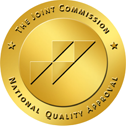The National Survey on Drug Use and Health (NSDUH) from 2012 asked about using methamphetamine in the year before the survey; about 0.4 percent of Americans, or 1.2 million people, admitted to using—with around 440,000 saying that they used it in the month before. This is a slight downturn from previous years, but remains a major problem—especially since when it comes to using illegal substances, there is often a significant amount of underreporting that takes place.
Quiz Maker – powered by Riddle
What are the Risks and Effects of Methamphetamine Abuse?
Methamphetamine addiction is risky, and every meth user experiences a load of side effects. Many are related to how much methamphetamine you use, and for how long you are addicted. However, one of the reasons that methamphetamine is so dangerous, is that addiction to this stimulant can develop so quickly, with the addict’s physical and mental health deteriorating fast.
Methamphetamine is a potent, highly addictive stimulant of the central nervous system (CNS). It first hits the brain, and it hits hard and fast, stimulating the production of a huge rush of dopamine. This neurotransmitter chemical that gives you a happy rush—but it doesn’t last. This leaves you scrambling to get that feeling back, at any cost.
Signs of methamphetamine addiction include:
- Alertness
- Memory impairment, loss
- Abscesses
- Psychotic symptoms similar to schizophrenia
- Avoidance of responsibility
- Decreased fatigue
- Allergic reactions to ingredients in meth
- Random, compulsive, and repetitive motor activities like scratching or twitching
- Euphoria
- Bad breath
- Reduced inhibition
- Blaming problems on other people or things
- Hyperattention
- Bacterial infections from open sores and sharing contaminated needles
- Self-absorption
- Neglecting health, family, work, relationships, and other responsibilities
- Intense feelings of pleasure
- Blood clots
- Loss of appetite
- Brain damage
- Manic physical activity
- Cardiovascular damage and disease
- Chronic anxiety
- Dental decay
- Compulsive drug-seeking behavior
- Dry mouth
- Functional and structural changes to the brain
- Gum disease
- Heart damage
- Impaired cognitive function
- Hepatitis B and C, HIV, other illnesses from sharing needles
- Impaired motor abilities
- Inflammation of skin, of injuries, and at injection sites
- Mood disturbances
- Insomnia
- Psychotic symptoms
- Kidney damage
- Liver damage
- Aggression and violence
- Lasting dry mouth from damage to salivary glands
- Anhedonia (inability to enjoy things or feel happy)
- Nasal damage
- Chronic apathy
- Lung damage
- Compulsive motor activity
- Premature, rapid physical aging
- Decreased attention span
- Parkinson’s disease
- Theft of valuables and money, even from family and friends
- Delusions
- Skin infections, sores, open wounds
- Dopamine disturbances
- Ruptured arteries
- Hallucinations
- Tooth decay, rotting, stained, discolored, or missing teeth (“meth mouth”)
- Impaired judgment
- Stroke
- Lack of impulse control
- Unhealthy weight loss
- Putting drug-seeking behaviors before everything else
If you have ever experienced methamphetamine withdrawal symptoms, this is another sign of meth addiction. Methamphetamine withdrawal symptoms include:
- Anxiety
- Diarrhea
- Depression
- Fever
- Fatigue
- Nausea
- Muscle and Joint Pain
- Psychosis
- Paranoia
- Sleep deprivation
- Severe hunger
- Vomiting
Remember, methamphetamine addiction can happen fast. If you think you have a problem, you are probably right. Take action now, don’t wait for things to get worse.
Free, Confidential Meth Addiction Assessment
If you’ve asked yourself whether you might have a methamphetamine addiction, take action on your own behalf now. Take our free, confidential meth addiction assessment. Find out if you need help, so you can take the next step.




